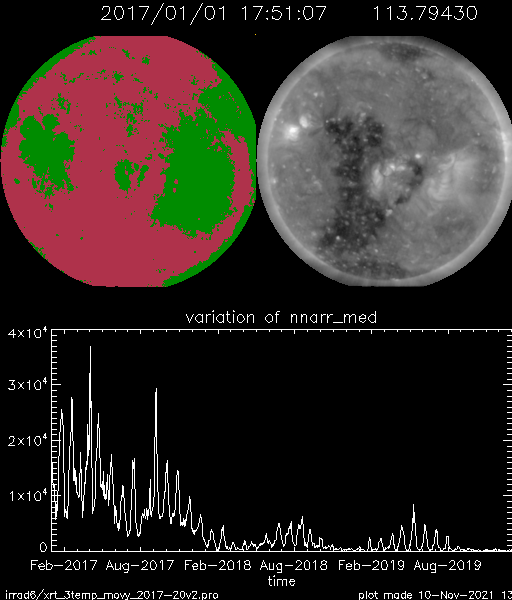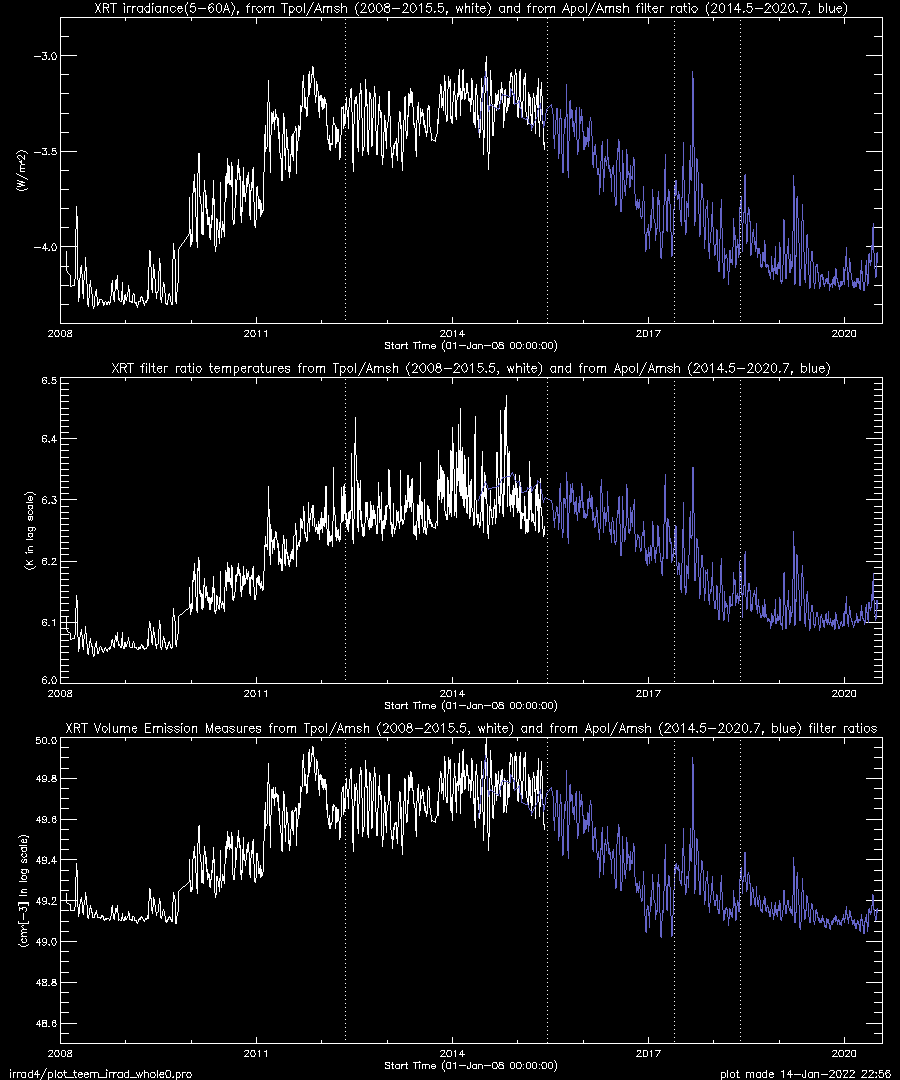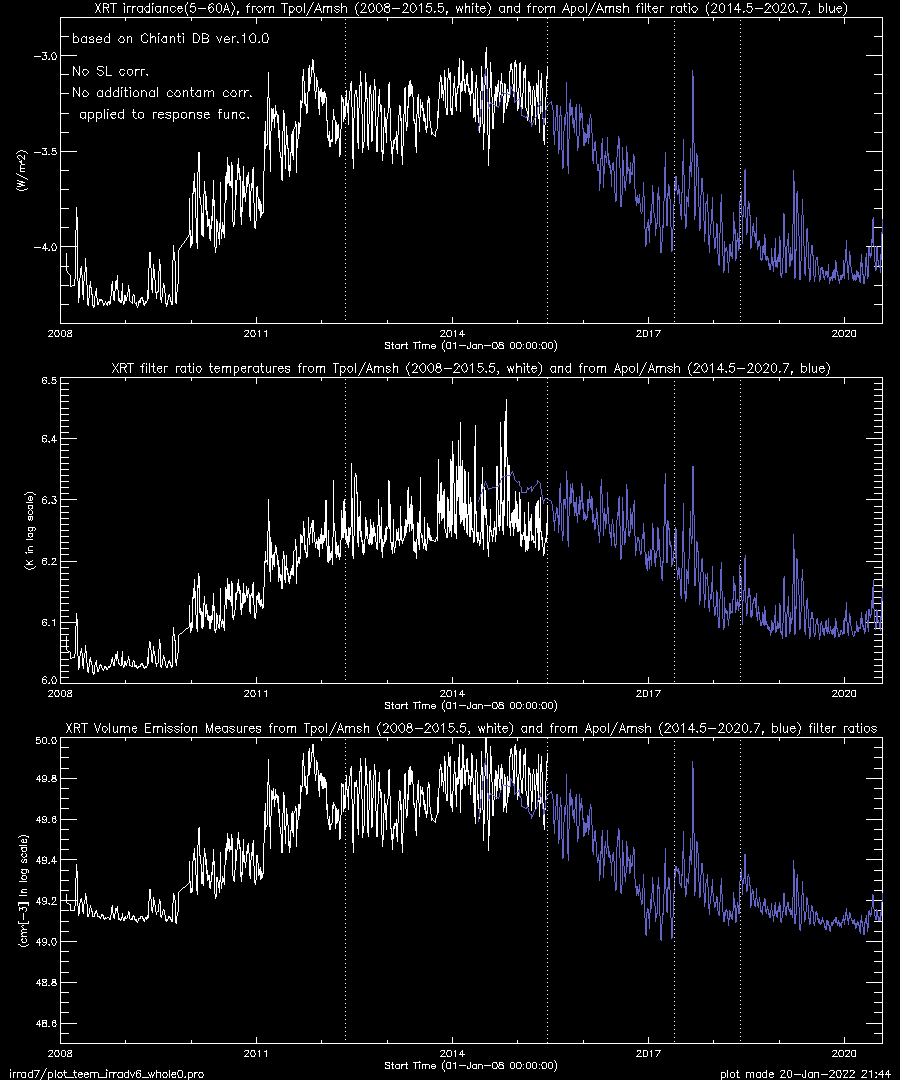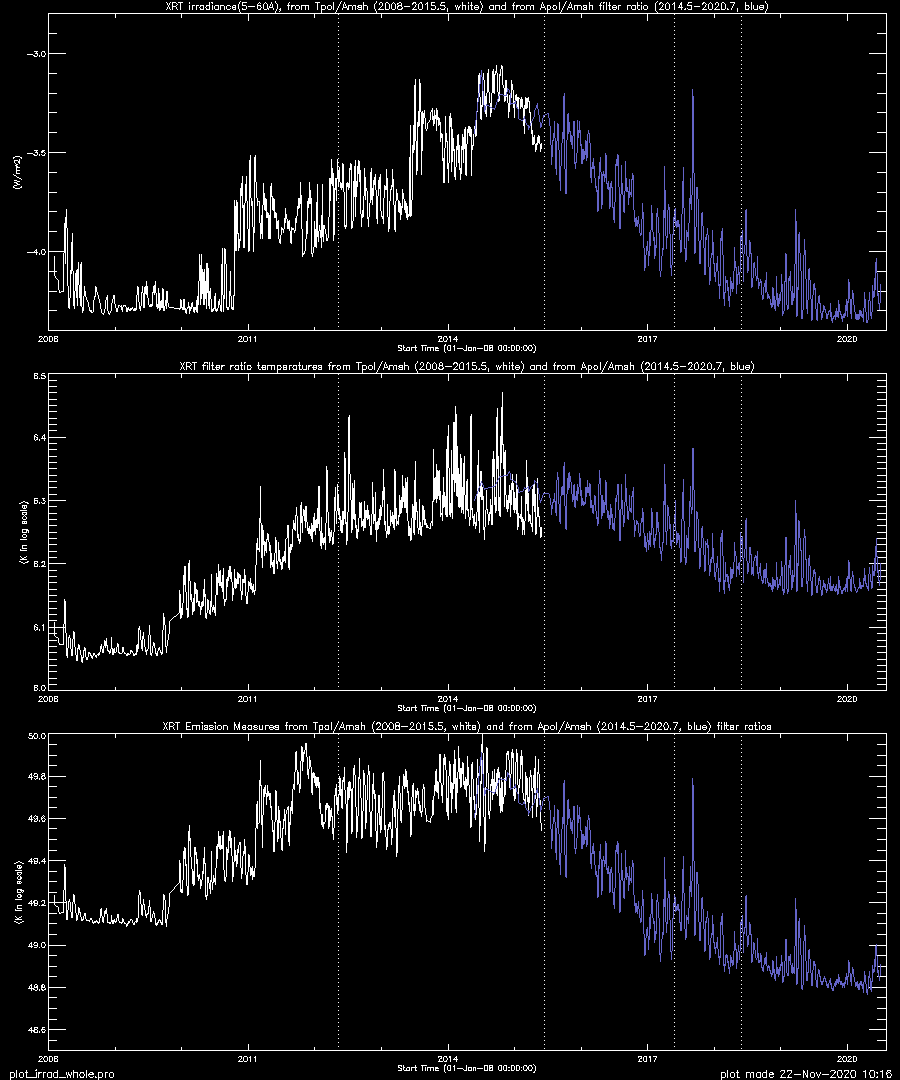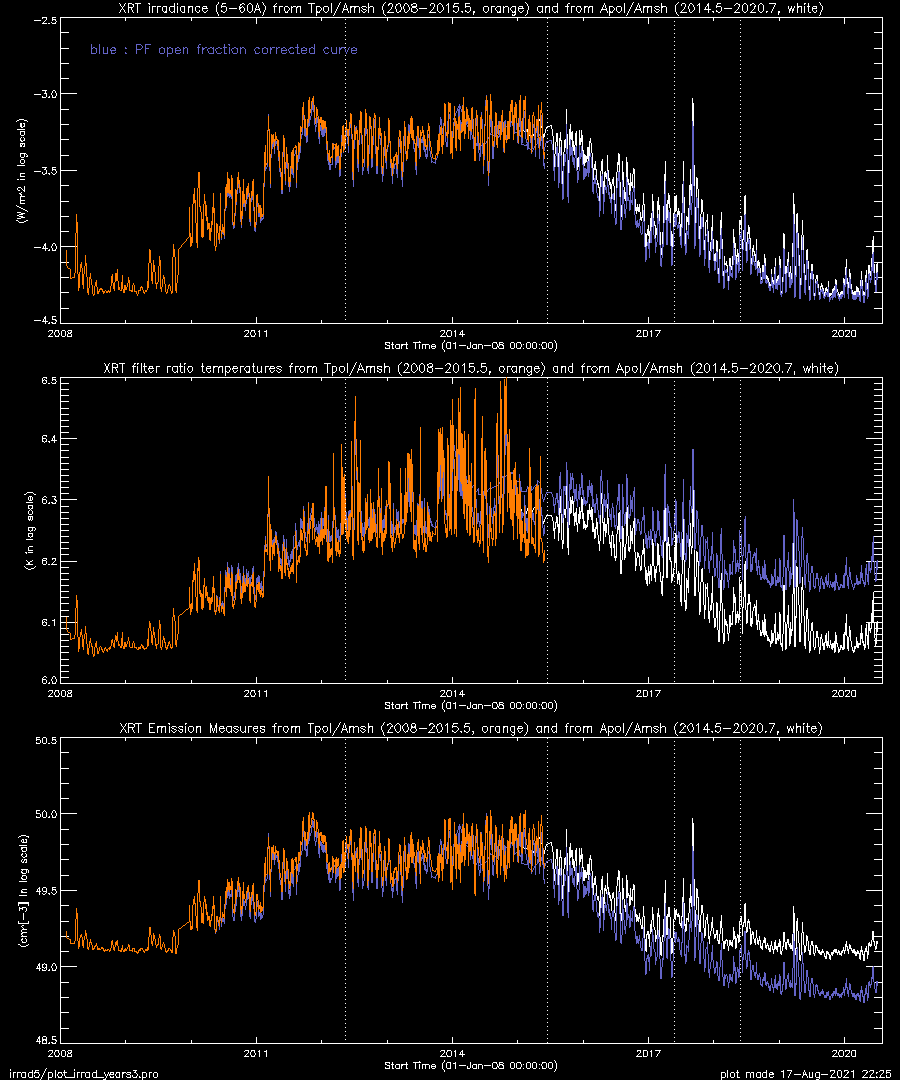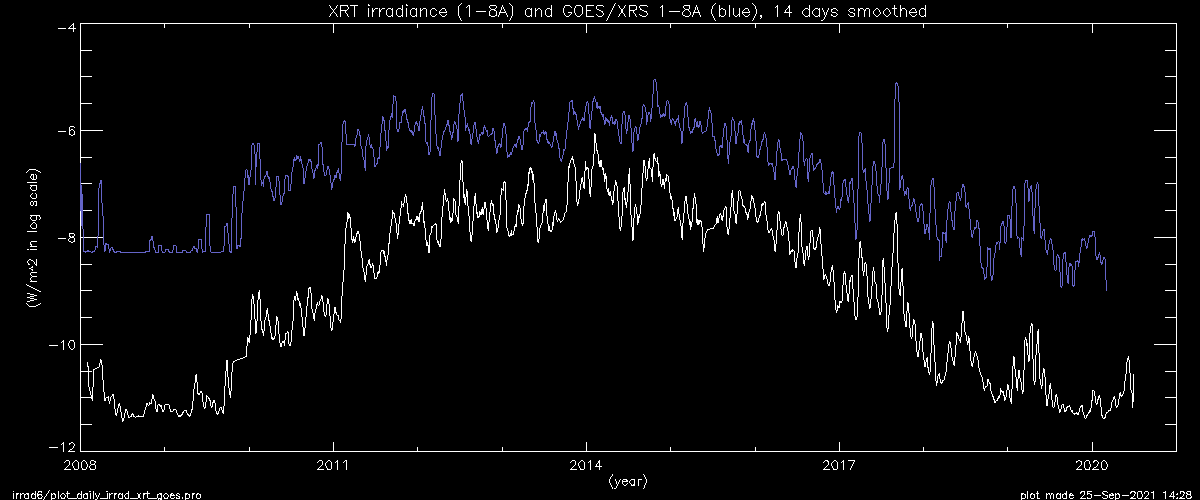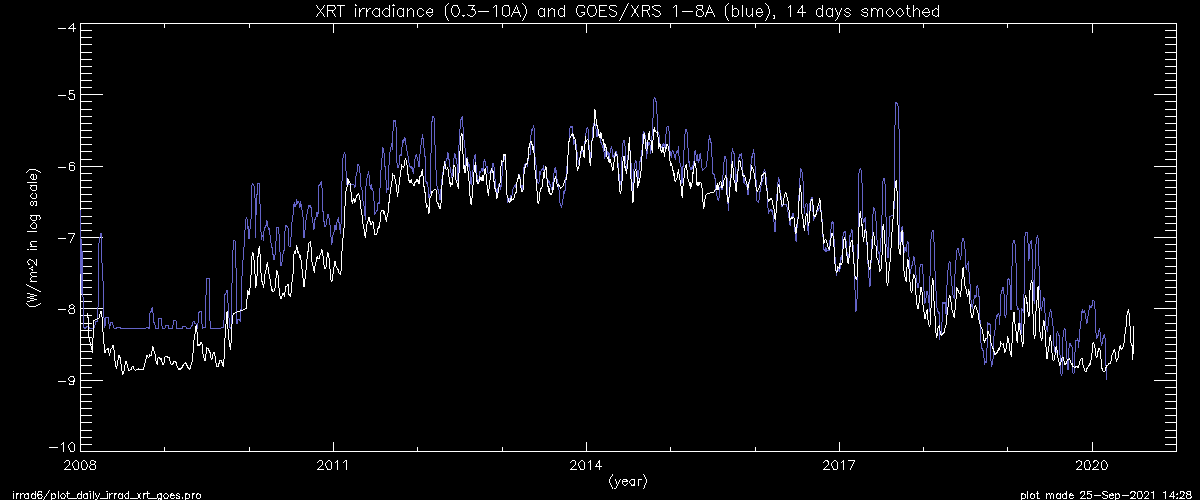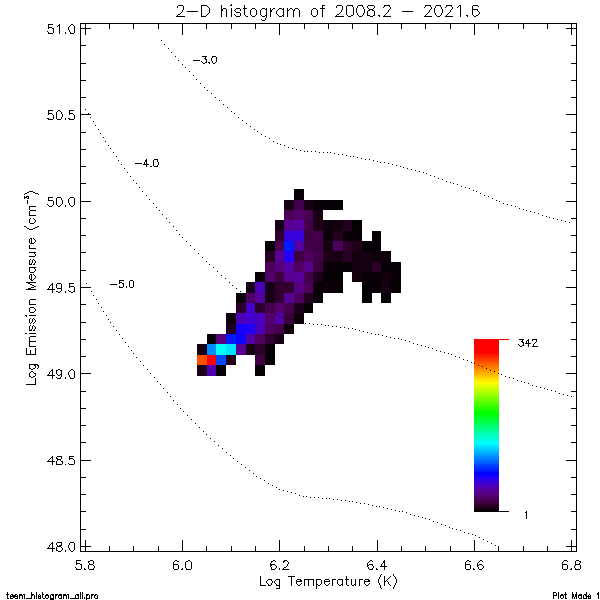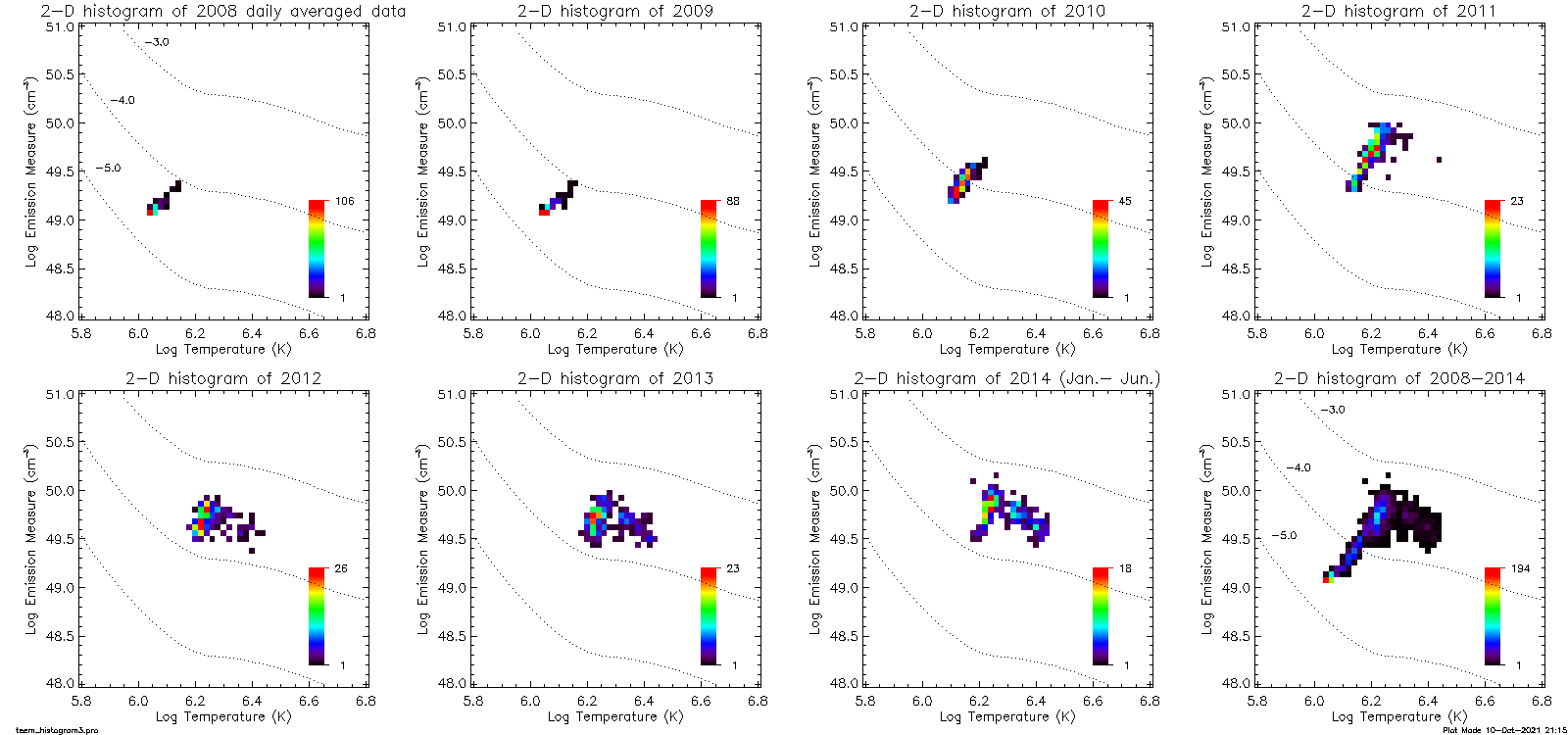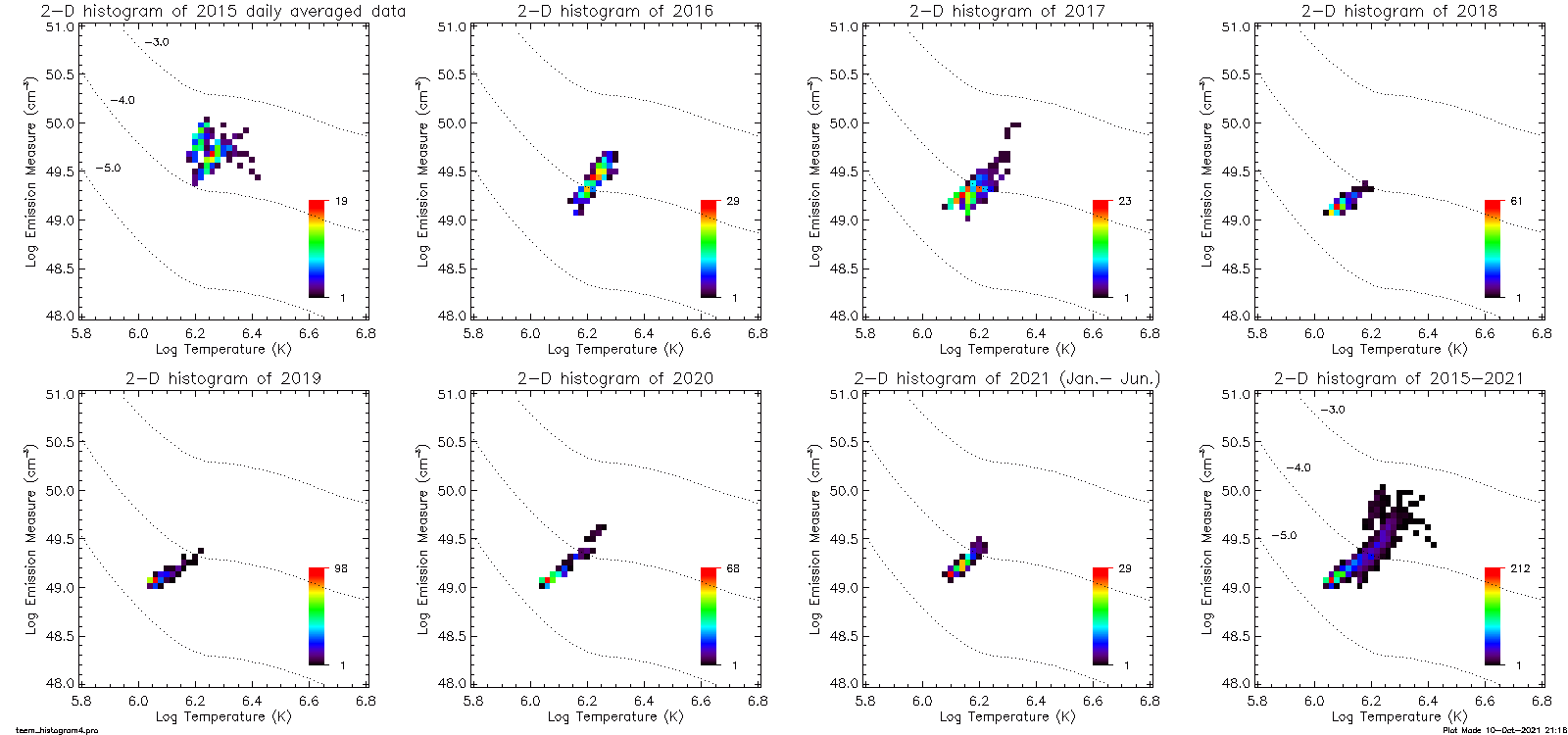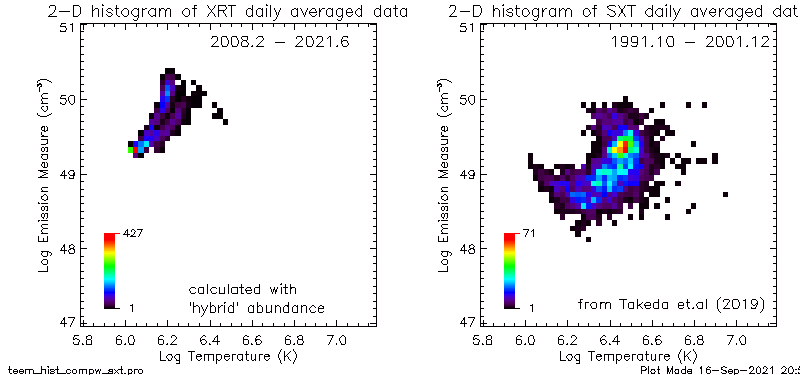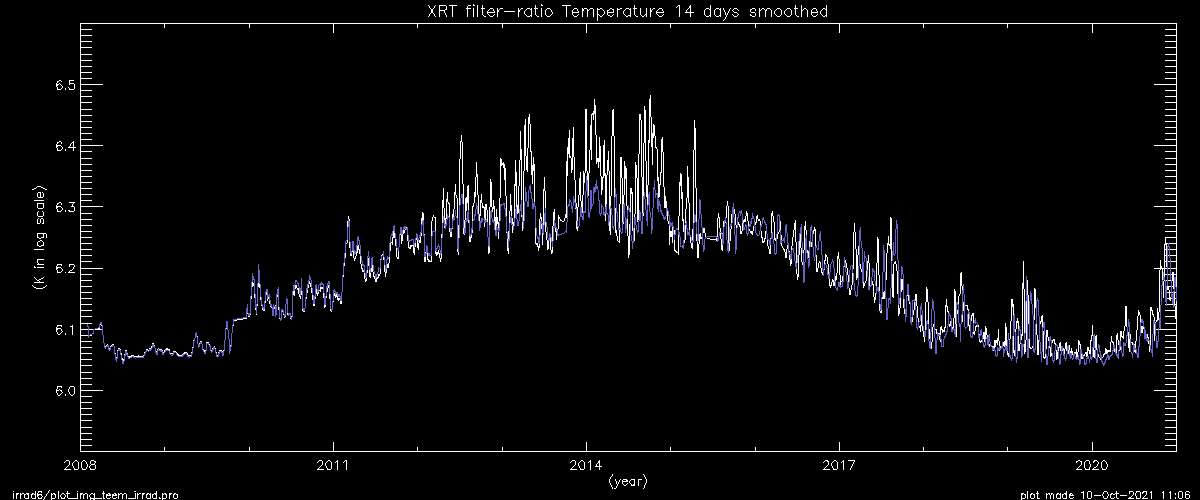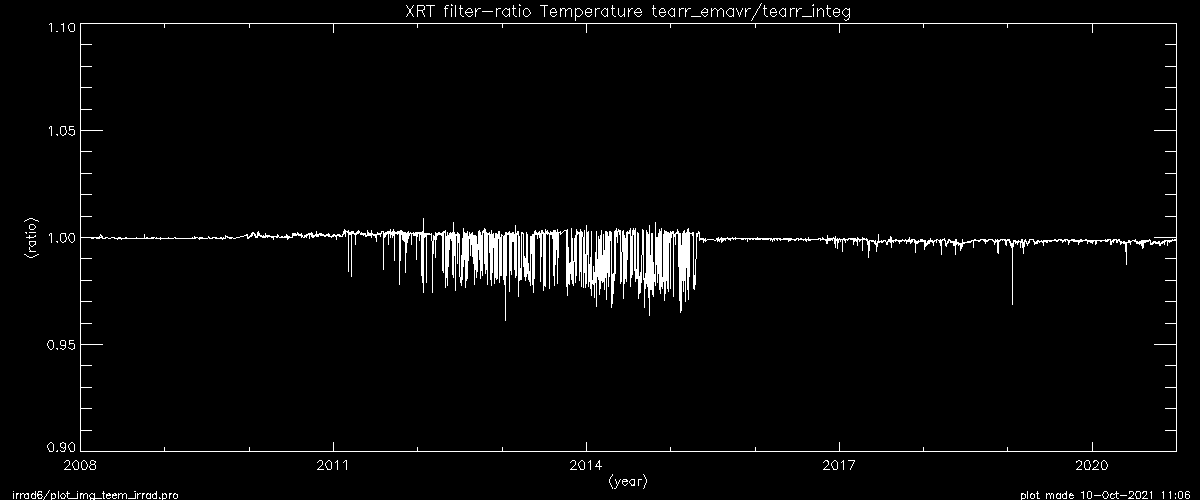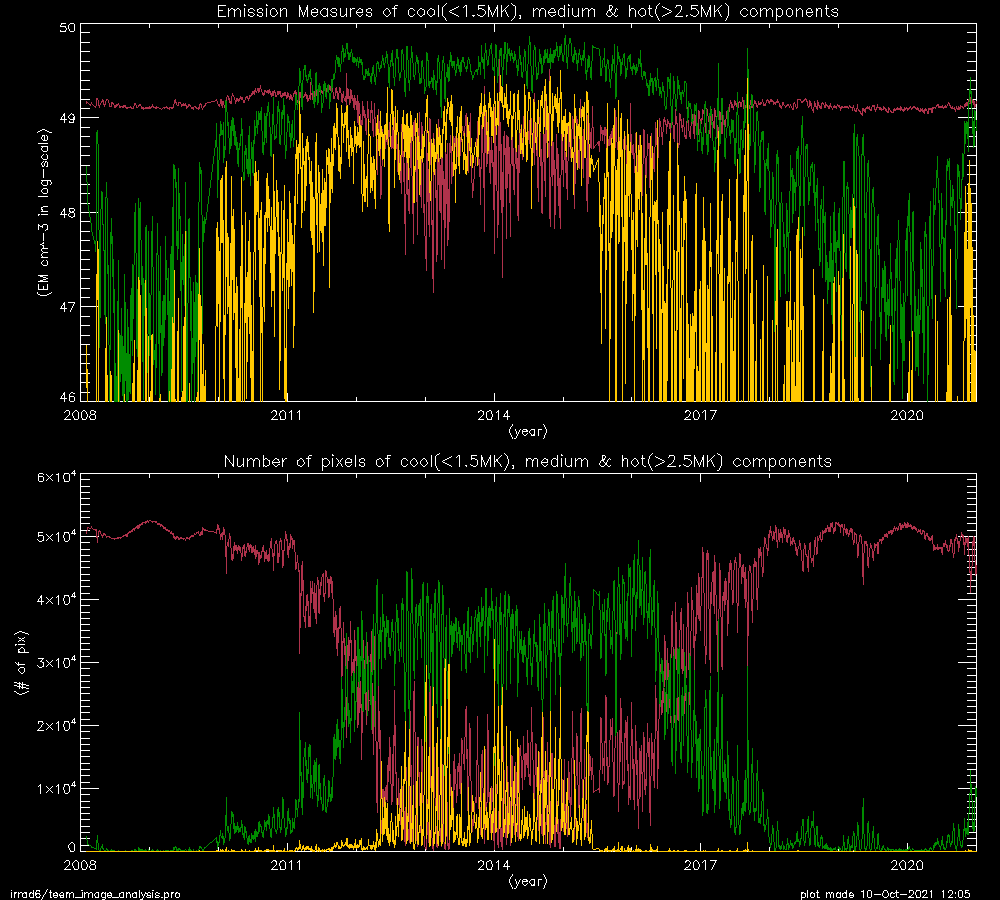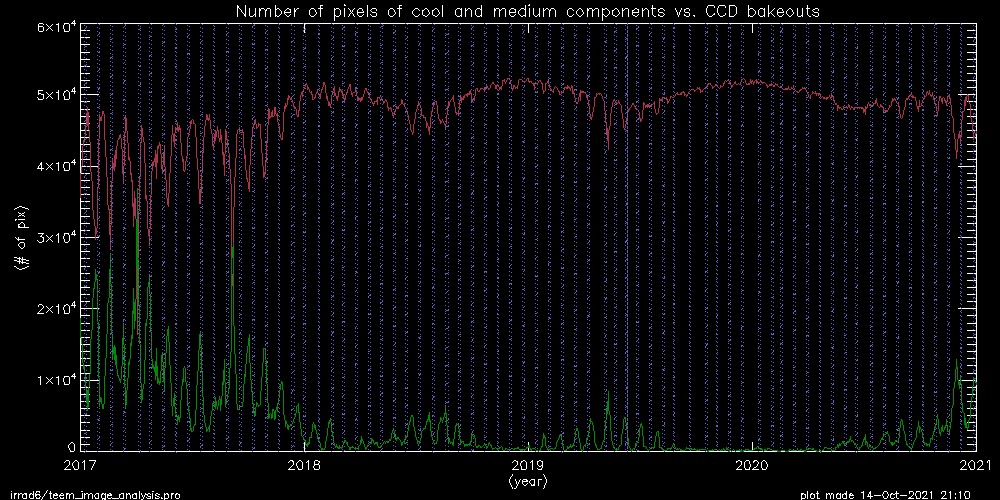XRT irradiance study --- part 4 ---
22-Nov-2020, Aki Takeda.
16-Sep-2021, introducing new correction, FPAF contamination.
17-Sep-2021, added Te and EM analysis.
26-Sep-2021, Comparison with GOES/XRS added.
20-Jan-2022, Chianti ver.10.0 version added to No-Corr plots.
XRT irradiance (5-60A), filter ratio Te and EM
- No correction of pre-filter open fraction with Chianti ver.9 (left)
and Chianti ver.10(right)
- Pre-filter open fraction corrected by G-band intensity analysis:
- open_fraction at phase 1 (after 9-May-2012 12:00) : 0.001
- open_fraction at phase 2 (after 14-Jun-2015 12:30) : 0.033
- open_fraction at phase 3 (after 27-May-2017 11:00) : 0.075
- open_fraction at phase 4 (after 29-may-2018 00:00) : 0.099
- Introducing contamination layer on X-ray analysis filters:
details
Comparison with GOES/XRS low energy flux (1-8A)
- Preparation of GOES daily average data
- 2008-2010 : composite of GOES 11/10/14 (YLA seamless GOES products).
- 2008-2020 : GOES 15 official XRS data prepared by Suman Panda in 2020.
- Comparison of GOES/XRS 1-8A and Hinode/XRT 1-8A irradiance.
GOES/XRS response function (log energy channel)
- Comparison of GOES/XRS 1-8A and Hinode/XRT 0.3-10A irradiance.
- Scatter plot of GOES/XRS 1-8A and Hinode/XRT 0.3-10A irradiance.
Te v.s. EM study with the fully corrected data
[note] dotted lines in each plot indicate the equi-irradiance curves
calculated for the wavelength range of 5-60 A in the unit of W/m^2.
- Comparing with Yohkoh/SXT
- XRT plot includes 2 solar minimum periods and 1 max period.
- SXT plot includes 1 solar minimum period and 2 max periods.
- XRT Al_mesh, Ti_poly and Al_poly filters sample the cooler
portion of the coronal plasma than SXT thin_Al and AlMg filters.
- The former (XRT) samples more dominant portion of coronal
plasma because of its higher EM than SXT's.
- Enormously high frequency on XRT's lowest Te and EM histgram
bin(s) might be showing that XRT observes the very bottom of
the solar minumum condition.
Applying the TEEM to the images
XRT 3-temperature movie
checking if the clear oscillation at near solar rotation period is not
created by the CCD bakeout operation.
checking if the clear oscillation is really created by the passing ARs:
max day reading from nnmed_mexdate.pro
(click image to see a movie)
